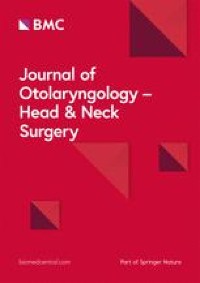|
Αρχειοθήκη ιστολογίου
-
►
2023
(138)
- ► Φεβρουαρίου (74)
- ► Ιανουαρίου (64)
-
▼
2022
(849)
- ► Δεκεμβρίου (61)
- ► Σεπτεμβρίου (74)
-
▼
Φεβρουαρίου
(65)
-
▼
Φεβ 06
(7)
- Cephalic vein transposition in head-and-neck recon...
- Effect of monocarboxylate transporter-1 on the bio...
- Mutations within the putative protease domain of t...
- 18F-Fluorodeoxyglucose Positron Emission Tomograph...
- Myocardial Ischemia on MPI SPECT in a Patient with...
- Hybrid Renal Cortical Imaging with Single Photon E...
- Hereditary oral squamous cell carcinoma associated...
-
▼
Φεβ 06
(7)
-
►
2021
(2936)
- ► Δεκεμβρίου (59)
- ► Σεπτεμβρίου (180)
- ► Φεβρουαρίου (325)
-
►
2020
(1624)
- ► Δεκεμβρίου (293)
- ► Σεπτεμβρίου (234)
- ► Φεβρουαρίου (28)
-
►
2019
(13362)
- ► Δεκεμβρίου (19)
- ► Σεπτεμβρίου (54)
- ► Φεβρουαρίου (5586)
- ► Ιανουαρίου (5696)
-
►
2018
(66471)
- ► Δεκεμβρίου (5242)
- ► Σεπτεμβρίου (5478)
- ► Φεβρουαρίου (4835)
- ► Ιανουαρίου (5592)
-
►
2017
(44259)
- ► Δεκεμβρίου (5110)
- ► Σεπτεμβρίου (5105)
-
►
2016
(7467)
- ► Δεκεμβρίου (514)
- ► Σεπτεμβρίου (1038)
- ► Φεβρουαρίου (793)
Αναζήτηση αυτού του ιστολογίου
Κυριακή 6 Φεβρουαρίου 2022
Cephalic vein transposition in head-and-neck reconstruction
Effect of monocarboxylate transporter-1 on the biological behavior of iodine-refractory thyroid carcinoma
|
Mutations within the putative protease domain of the human FAM111B gene may predict disease severity and poor prognosis: A review of POIKTMP cases
|
18F-Fluorodeoxyglucose Positron Emission Tomography/Magnetic Resonance Imaging Appearance of Gastrointestinal Behcet's Disease
|
Myocardial Ischemia on MPI SPECT in a Patient with Acute Myeloid Leukemia Without Significant Coronary Artery Disease
|
Hybrid Renal Cortical Imaging with Single Photon Emission Computerized Tomography/Computed Tomography in a Pediatric Patient with Severe Caudal Regression Syndrome
|
Hereditary oral squamous cell carcinoma associated with CDKN2A germline mutation: a case report
|
-
This protocol presents an in vitro live-imaging phagocytosis assay to measure the phagocytic capacity of astrocytes. Purified rat astrocyt...
-
Association française pour l'étude du cancer [Imatinib in the treatment of chronic myeloid leukemia in Morocco]. Related Articles [Im...
-
A Case of Miller Fisher Syndrome Due to the Use of Cemiplimab : No abstract available Miller Fisher syndrome is a rare, acquired n...




